More Trees Are Not Enough to Improve Air Quality
Living creatures need clean, unpolluted air to breathe and stay alive. Humans and animals need oxygen in the air, while trees and plants need carbon dioxide to survive. However, the air around us contains oxygen, carbon dioxide gas, and other chemical compounds that are 'not always good to breathe'. If these other compounds are present in the air excessively, we can say that our air is polluted.
But what if we live in a green area?
"Living in a green, leafy area with lots of trees is definitely safe from air pollution" might be the line that comes to mind when we're in a green space, such as a park or reforestation area.
In reality, this assumption is not entirely true. Let's see why! 👀
💨 There are two forms of air pollution: gases and particulates
As we have mentioned earlier, our air contains compounds or other substances, which when exceeded are referred to as pollutants. There are two forms of pollutants in the air: gases and particulates. Examples of gases are NOx, SO2, CO, and VOCs, while examples of particulates are dust, sand, and soot. Finer particulates are usually distinguished by their diameter, which are called PM10 and PM2.5. PM10 is less than 10 µm, while PM2.5 is less than 2.5 µm.
Due to its fine size, the WHO highlights PM2.5 as a pollutant that is harmful to health as it can be inhaled and penetrate the alveolus in the human lungs. These gases and particulates are important components in the air that the Nafas sensor measures as air pollution, determining whether the air quality is good or bad.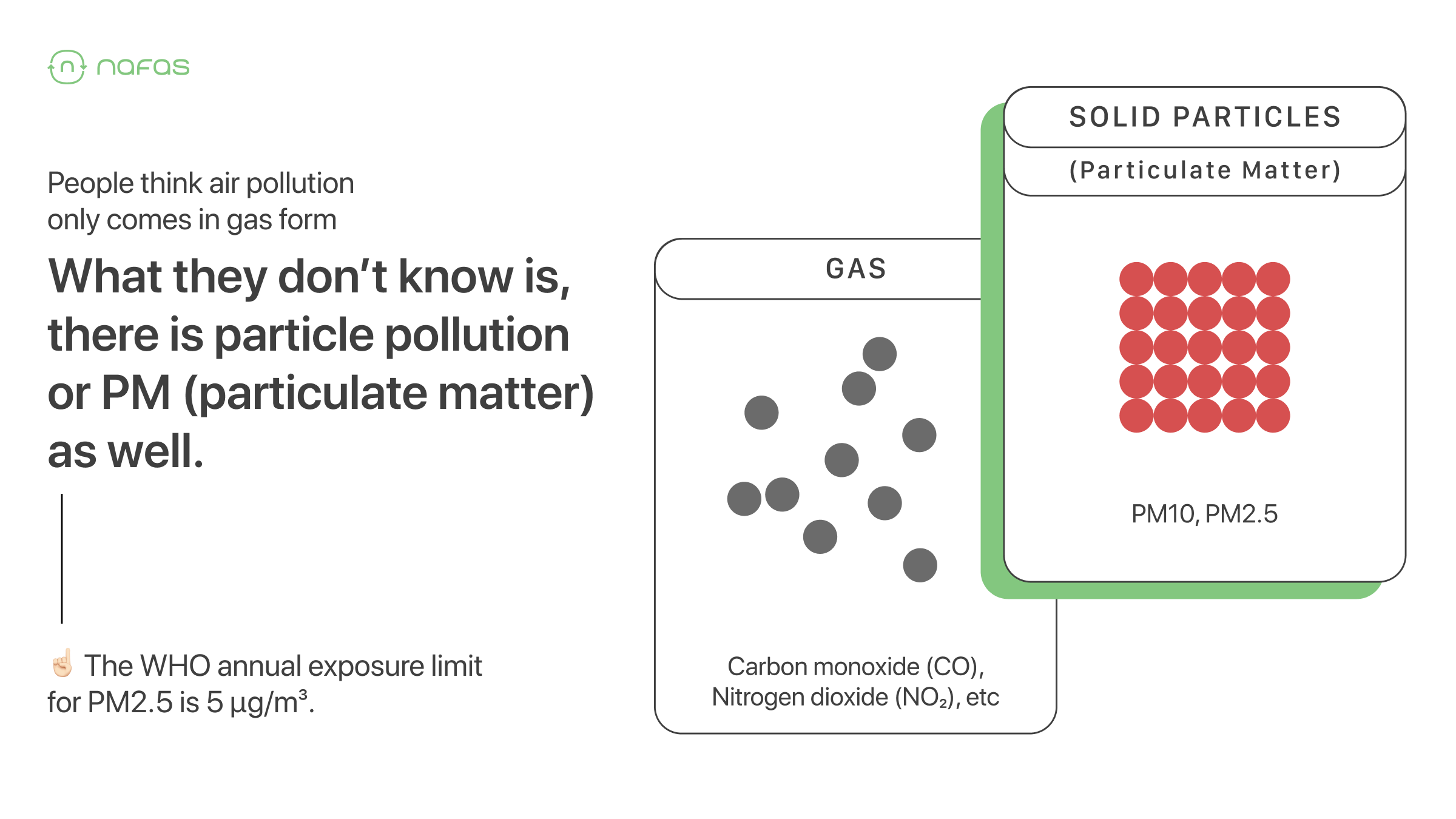
🌿 Trees only work on gases, not particulates
Leaves on trees can only absorb gases and not particulates. If you recall biology in elementary school, we know that leaves have stomata (mouths on the surface of leaves) that help trees breathe by capturing carbon dioxide (CO2) gas. However, as pollution levels increase, the stomata will also absorb other gases such as NOx, SO2, CO, and VOCs. Capturing these other gases that 'shouldn't be captured' can weaken the plant because it is not designed to absorb large amounts of them. For example, SO2 can make leaves yellow, while NOx can shut down stomata and leave brown spots on leaves.
🍃 Particulates will only be 'caught' on the leaf surface, not 'filtered out’
Particulates are not the same as gas. They tend to be dense and solid. Plant leaves, on the other hand, are not filters for solids. The 'remaining' particulate pollution will still float in the air, then 'fall' and 'get caught' on the leaves, until it crystallizes or accumulates on the plant surface. Finally, these particulates will return to the atmosphere, be washed away by rain, or fall to the ground with leaves and twigs. Thus, trees and vegetation only serve as temporary containers for particulates.
🌴 Green and leafy doesn't mean the air is clean
Many people still mistakenly believe that green areas improve air quality. Researchers from Shanghai showed in their experimental study that a 30% increase in PM2.5 occurred around areas full of trees. Also, a study from the U.S. EPA states that trees only reduce PM2.5 pollution concentrations by 0.24%! ☝🏻
This time, the Nafas team will discuss air quality in areas that are known for being 'green' in their cities: Gunung Pati in Semarang and Ubud on Bali Island.
Let's see if these green areas are really free of air pollution!
🏞️ Gunung Pati
Below is the Breath sensor map of Semarang in May 2023, with the purple circle (air quality mark 'Very Unhealthy') representing the Gunung Pati area.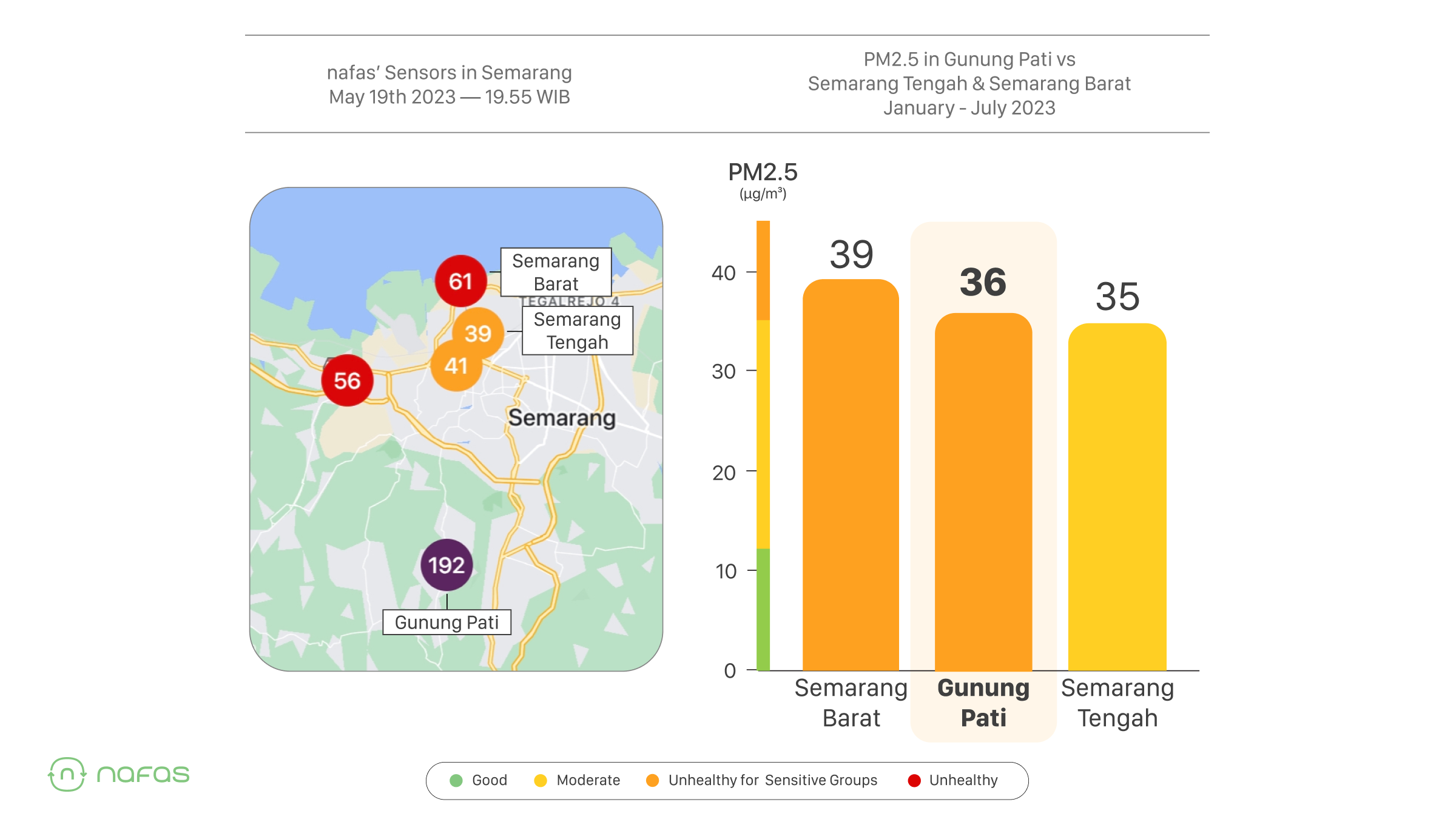
The Gunung Pati area in Semarang is ‘greener’ than the Central and West Semarang areas, but sometimes the pollution levels are high.
Let's see a graph of the difference in the amount of air pollution in Gunung Pati (blue line) and DKI Jakarta (black line) below!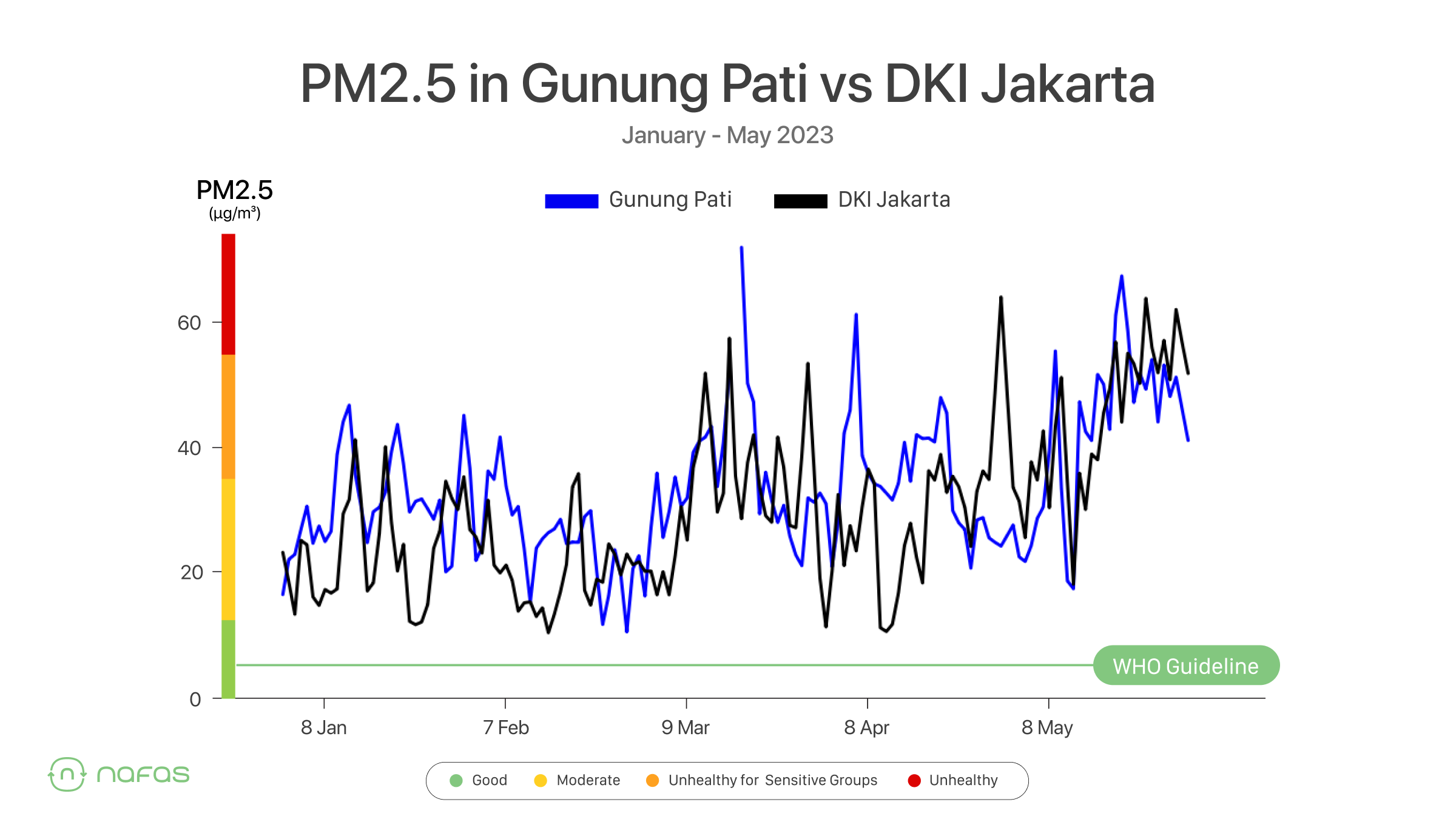
Pollution levels in Gunung Pati were found to be higher than in more tree-less areas, including DKI Jakarta. The cause is hyperlocal and indigenous pollution sources supported by wind movement due to the influence of Gunung Pati's topography and geographical conditions. Based on the US EPA study, with an average PM2.5 level from January to July 2023 of 36 µg/m3, it can be concluded that Gunung Pati (Semarang) requires an 86% reduction in PM2.5 pollution to achieve healthy air that meets the WHO annual exposure limit (5 µg/m3).
🏞️ Ubud
Now let's cross over to the next island: Bali! Below is a map of the Breath sensor on Bali Island, with the red circle (air quality mark 'Unhealthy') being the Ubud area. The Ubud area also looks greener than Sanur. However, PM2.5 pollution is on average higher in Ubud than in Sanur.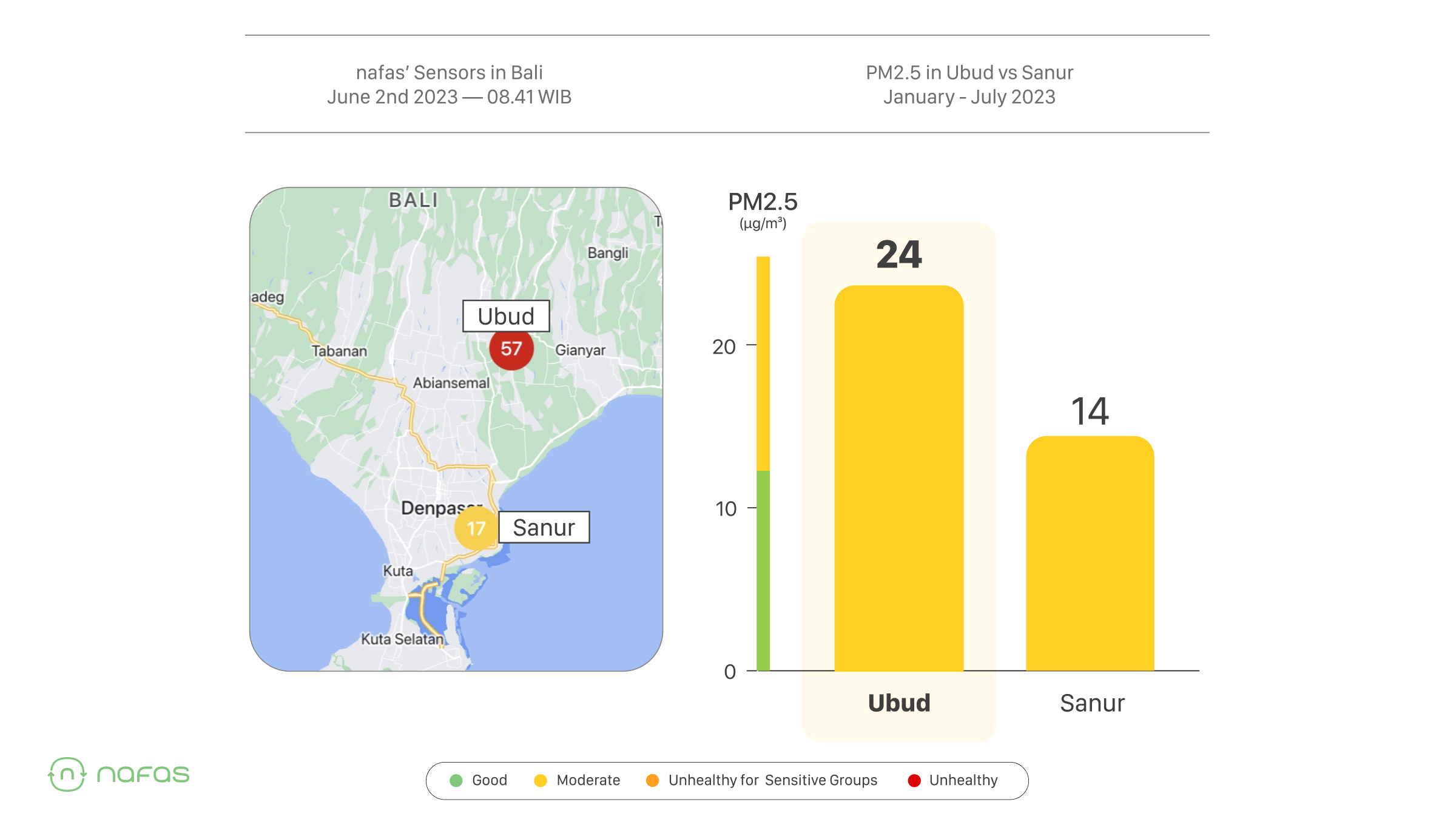
But when comparing to DKI Jakarta's average (black line), the air quality in Ubud (blue line) is still relatively better during 2023. This means that the pollution level in DKI Jakarta is still higher than in Ubud.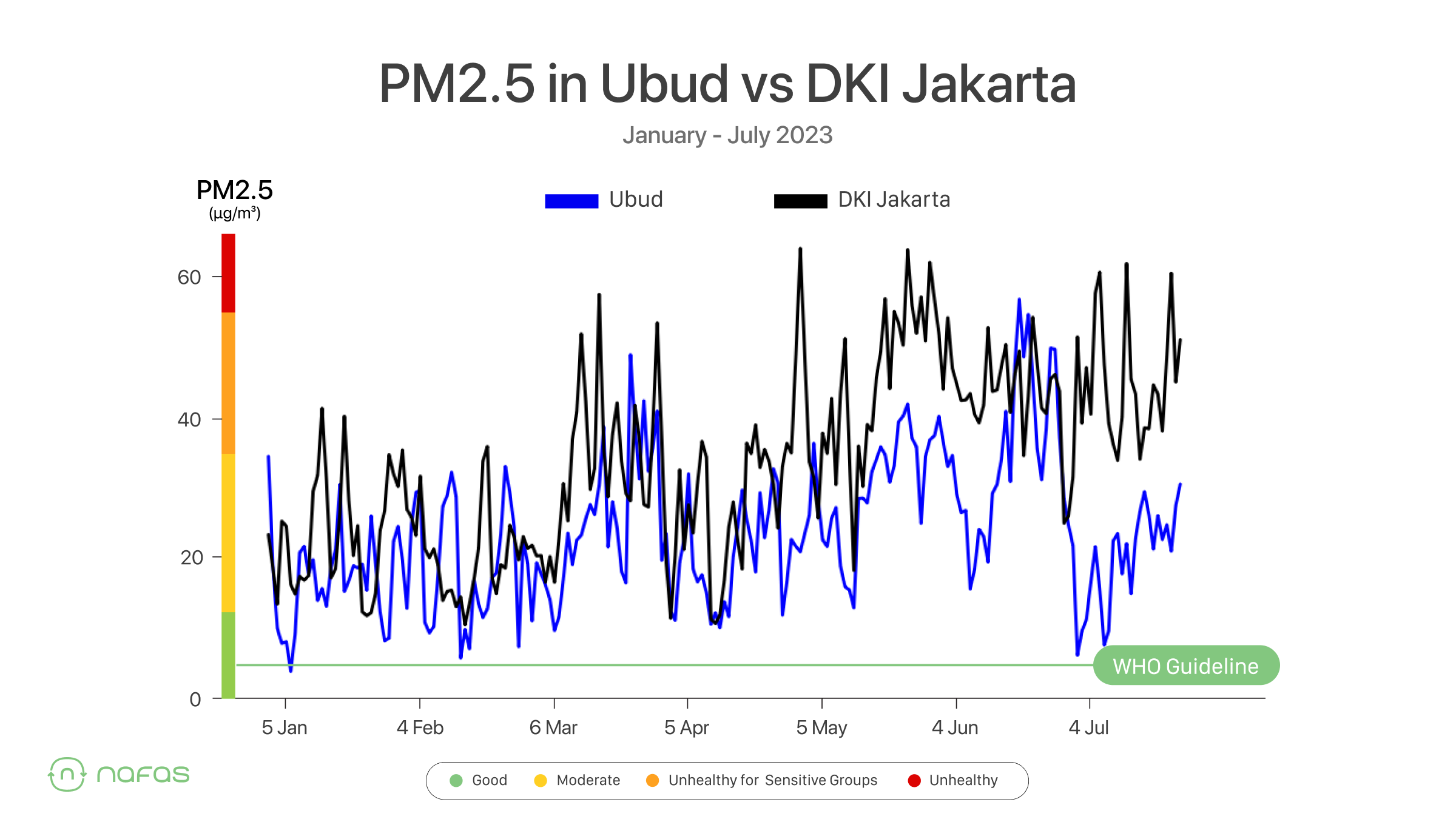
The Ubud area also looks greener than Sanur. However, PM2.5 pollution is on average higher in Ubud than in Sanur.
🌳 Greening alone is not enough to solve air pollution problems
In reality, we depend more on atmospheric conditions and wind speed to reduce air pollution. The presence of trees is good for tackling gas pollution, but not enough to remove particulate matter (PM2.5) that is dangerous to health.
To improve air quality, the efforts and involvement of many parties are needed, such as switching to environmentally friendly energy, reducing fossil fuels, and many more, so that the greening role is also more effective.
✅ Routinely check the air quality on the Nafas app before going out to start a healthy habit!